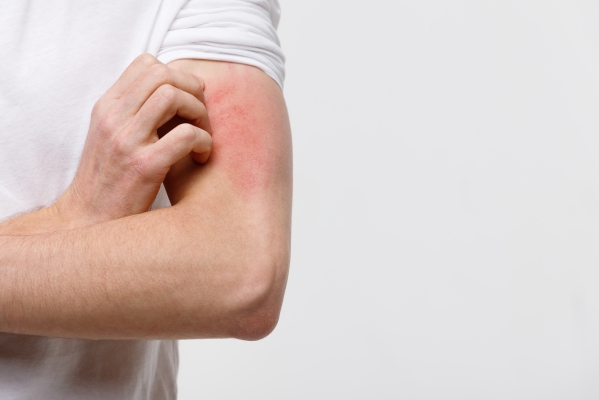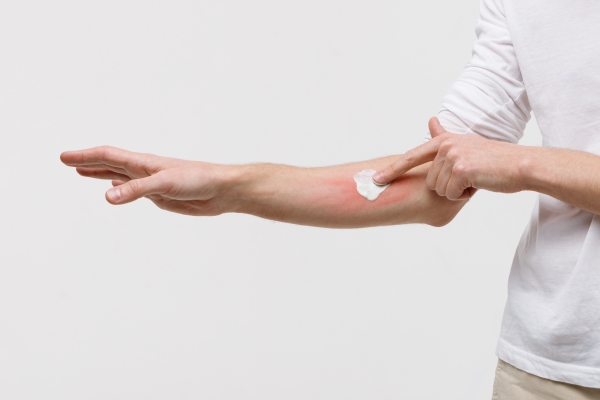What is Scabies?
Scabies is a condition that is caused by a mite known as Sarcoptes scabiei hominis, resulting in an intensely itchy skin. It is a very common problem causing around 300 million of cases per year. Scabies is transmitted through direct skin contact and has been considered, for this reason, as a sexually transmitted disease.
After having caught the mite, it may take up to 10 weeks until you experience symptoms related to scabies. During this period, the affected individual is contagious. It is uncommon to transmit scabies through beddings or clothing. However, this can happen in the severe forms of scabies, for examples, crusted scabies, where there is a higher number of parasites on the infested individual.
It affects people of all ages and races and is more common in overcrowded and lower socioeconomic groups. It is most common among children and people who are sexually active. Scabies may have a different manifestation in people who are old, have human immunodeficiency virus (HIV) and those who had recently undergone an organ transplant.
What causes scabies?
Scabies is causes by a mite known as S scabiei hominis. It is a female mite that can hardly be seen with naked eye. It has 4 pairs of legs and crawls on the skin. It cannot fly or jump. It can survive on other surfaces for 2-3 days at room temperature, however, below the temperature of 20°C, the mite becomes immobile. The mite remains in superficial layers of the skin where it causes symptoms. An individual may have the mite and no symptoms at all but can still transmit it to someone else.

The symptoms of scabies is caused by the female mite which forms tunnels in the skin to lay eggs once it has been fertilized. It lays eggs under the skin until she dies after around 1-2 months. The eggs later hatch and the new mites go back to the surface of the skin. The cycle repeats when they mate and go back under the skin to lay eggs.
Animal scabies is caused by a different type of mite. It can get on the human skin and tunnel under the skin. This causes itching but they do not reproduce. This does not require any treatment as it usually resolves on its own once the mites die. However it is advised that you get your dog treated by a veterinarian if you suspect them having scabies.
What are the symptoms of scabies?
There are two types of scabies: Typical and crusted scabies
Typical scabies
Typical scabies usually manifest with the following symptoms:
- Widespread itching of the skin
- Itchiness that gets more severe at night
- Reddish lesions or blisters on the skin
- “Burrow” or tunnel sign on the skin which can be seen as a thin visible line extending from 2 to 15 millimetres.
- Lesions becoming more irritated and inflamed with scratching
The most commonly affected body areas include the following:

- Fingers and webbing in between fingers
- Armpits
- Skin folds
- Around the nipples
- Waist
- Penis and scrotum
- Lower buttocks and upper thighs
- Sides and bottom of the feet
Crusted scabies
Crusted scabies, also known as Norwegian scabies, is a severe form of the disease that is common in people with a weak immune system. This includes people with HIV infection, lymphoma and those who recently had an organ transplant. It is also common in old people and people with Down syndrome.
It manifests with large and crusty red patches on the skin. Bumpy lesions may also be present. It usually spreads easily if left untreated. Crusted scabies is most commonly present on the scalp, hands and feet. These lesions contain a large number of mites which can be transmitted through beddings or clothing.

How is the diagnosis of scabies made?
To make the diagnosis of scabies, your doctor will first start by asking you a series of questions to know more about your symptoms and your risk factors. He/she will then proceed by examining your skin to look at the lesions present.
In some cases, where the diagnosis is doubtful, your doctor may scrape the affected area of your skin to send for further analysis under a microscope. This will enable identification of the mites or eggs in the skin hence confirming the diagnosis.

How is scabies treated?
The main goal of treatment of scabies it to eliminate the presence of the mites in the skin. The most commonly used medication is permethrin 5% cream. This medication is applied to all areas of the skin as from the neck to the feet and left for around 8-14 hours. It is then washed off in a shower or bath. Depending on your particular case, you may have to repeat the treatment as your doctor instructs you. Those who have crusted scabies usually require permethrin and an anti-parasitic pill such as ivermectin. It is recommended that you carefully follow the instructions given to you to make sure that the treatment is effective and successful.
For the treatment of scabies, it is also very important to treat family members to avoid re-infestation. It is also recommended as other family members may be having the parasite without exhibiting any symptoms. It is also advised to wash or isolate clothing, bedding, towels and any other fabrics that may have been in close contact with an affected individual. Isolation can be done by placing all the items in a closed plastic bag for at least 3 days. Washing and isolation is particularly recommended in cases of crusted scabies.
Antihistamines may be prescribed to relieve itching. Two forms of antihistamines are available: non-sedating and sedating antihistamines. Non-sedating antihistamines are recommended during the day. Some examples include loratadine and cetirizine. Sedating antihistamines are recommended at night as they can also help to improve sleep. An example include diphenhydramine.

It is advised to avoid scratching as this can result to infection. You should also keep your skin clean and dry. If signs of infection start to develop, such as redness, swelling, pus or pain, your doctor may have to prescribe oral antibiotics.
Prognosis
If the diagnosis of scabies is made correctly and treatment is initiated early, the prognosis in healthy individuals is usually excellent. Crusted scabies is usually associated with a less favourable outcome. Symptoms of scabies may persist for 2-4 weeks after treatment. Complications from scabies is usually rare and results from vigorous rubbing and scratching.

Source:
Goldstein, B., and Goldstein, A., n.d. Scabies: Epidemiology, clinical features, and diagnosis
Goldstein, B., and Goldstein, A., n.d. Scabies: Management
Barry, B., 2020. Scabies


